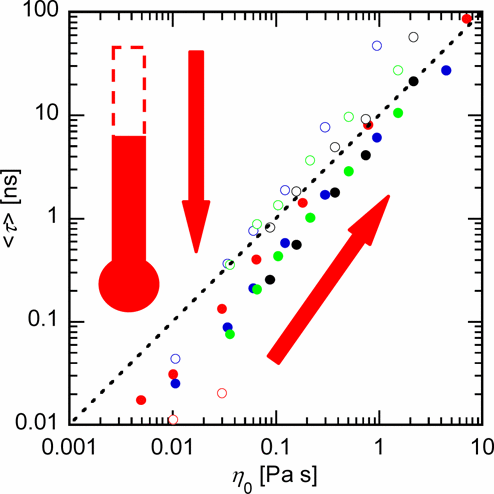当前位置:
X-MOL 学术
›
J. Phys. Chem. B
›
论文详情
Our official English website, www.x-mol.net, welcomes your
feedback! (Note: you will need to create a separate account there.)
Decoupling between the Temperature-Dependent Structural Relaxation and Shear Viscosity of Concentrated Lithium Electrolyte
The Journal of Physical Chemistry B ( IF 2.8 ) Pub Date : 2017-09-08 00:00:00 , DOI: 10.1021/acs.jpcb.7b04633 Tsuyoshi Yamaguchi 1 , Koji Yoshida 2 , Toshio Yamaguchi 2 , Michihiro Nagao 3, 4 , Antonio Faraone 3 , Shiro Seki 5
The Journal of Physical Chemistry B ( IF 2.8 ) Pub Date : 2017-09-08 00:00:00 , DOI: 10.1021/acs.jpcb.7b04633 Tsuyoshi Yamaguchi 1 , Koji Yoshida 2 , Toshio Yamaguchi 2 , Michihiro Nagao 3, 4 , Antonio Faraone 3 , Shiro Seki 5
Affiliation

|
The intermediate scattering functions of concentrated solutions of LiPF6 in propylene carbonate (PC) were measured at various temperatures, two different wavenumbers, and three different concentrations using neutron spin echo (NSE) spectroscopy. The temperature dependence of the relaxation time was larger than that of the steady-state shear viscosity in all cases. The shear relaxation spectra were also determined at different temperatures. The normalized spectra reduced to a master curve when the frequency was multiplied by the steady-state shear viscosity, indicating that the temperature dependence of the steady-state shear viscosity can be explained by that of the relaxation time of the shear stress. It is thus suggested that the dynamics of the shear stress is decoupled from the structural dynamics on the molecular scale.
中文翻译:

依赖温度的结构弛豫与浓锂电解质的剪切粘度之间的解耦
LiPF 6浓溶液的中间散射函数使用中子自旋回波(NSE)光谱仪在各种温度,两个不同的波数和三个不同的浓度下测量碳酸亚丙酯(PC)中的H2O3含量。在所有情况下,松弛时间的温度依赖性都大于稳态剪切粘度。还在不同温度下测定了剪切弛豫谱。当频率乘以稳态剪切黏度时,归一化光谱减小为一条主曲线,表明稳态剪切黏度的温度依赖性可以用剪切应力的松弛时间来解释。因此,建议在分子尺度上将剪切应力的动力学与结构动力学解耦。
更新日期:2017-09-08
中文翻译:

依赖温度的结构弛豫与浓锂电解质的剪切粘度之间的解耦
LiPF 6浓溶液的中间散射函数使用中子自旋回波(NSE)光谱仪在各种温度,两个不同的波数和三个不同的浓度下测量碳酸亚丙酯(PC)中的H2O3含量。在所有情况下,松弛时间的温度依赖性都大于稳态剪切粘度。还在不同温度下测定了剪切弛豫谱。当频率乘以稳态剪切黏度时,归一化光谱减小为一条主曲线,表明稳态剪切黏度的温度依赖性可以用剪切应力的松弛时间来解释。因此,建议在分子尺度上将剪切应力的动力学与结构动力学解耦。











































 京公网安备 11010802027423号
京公网安备 11010802027423号